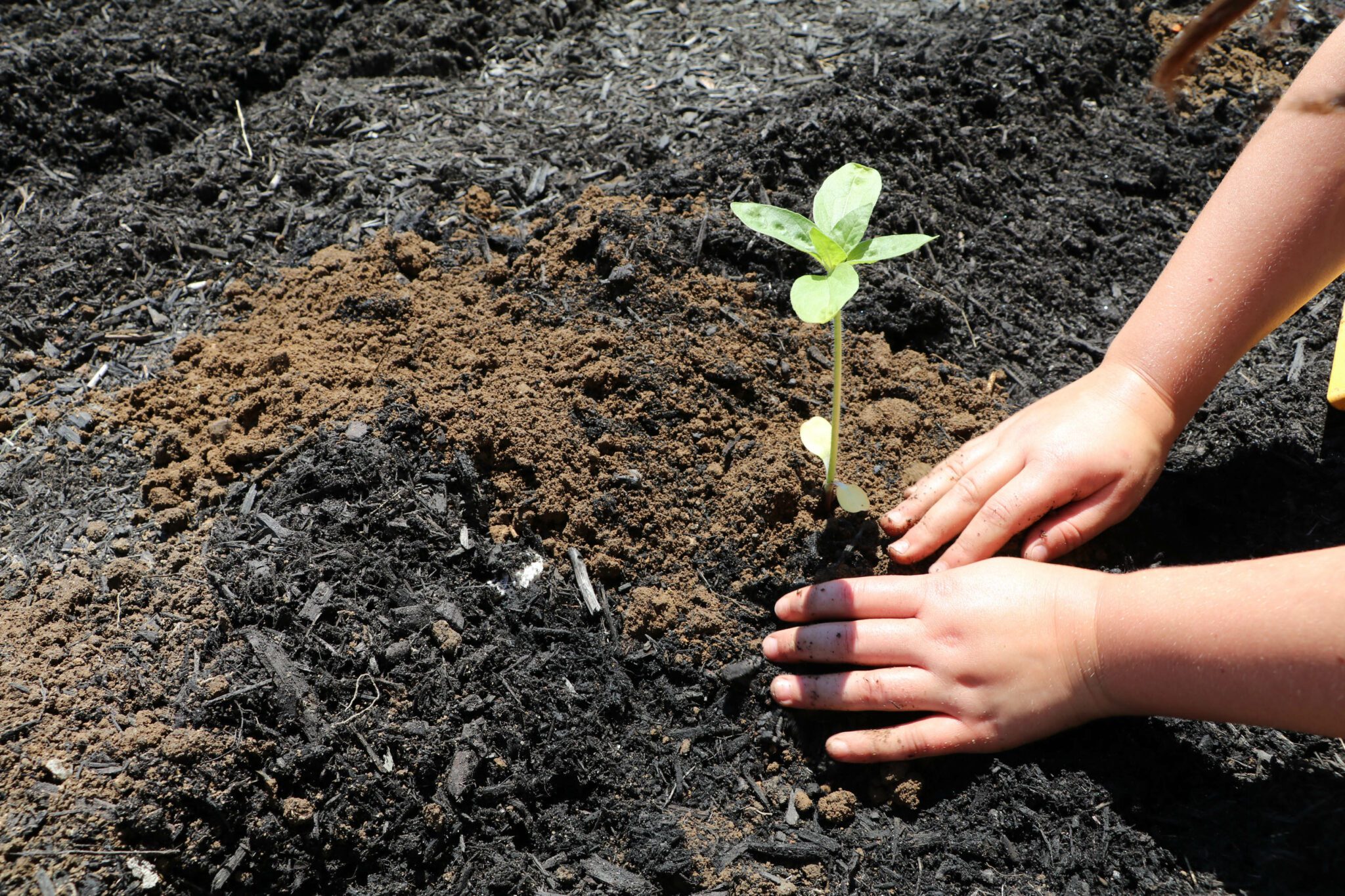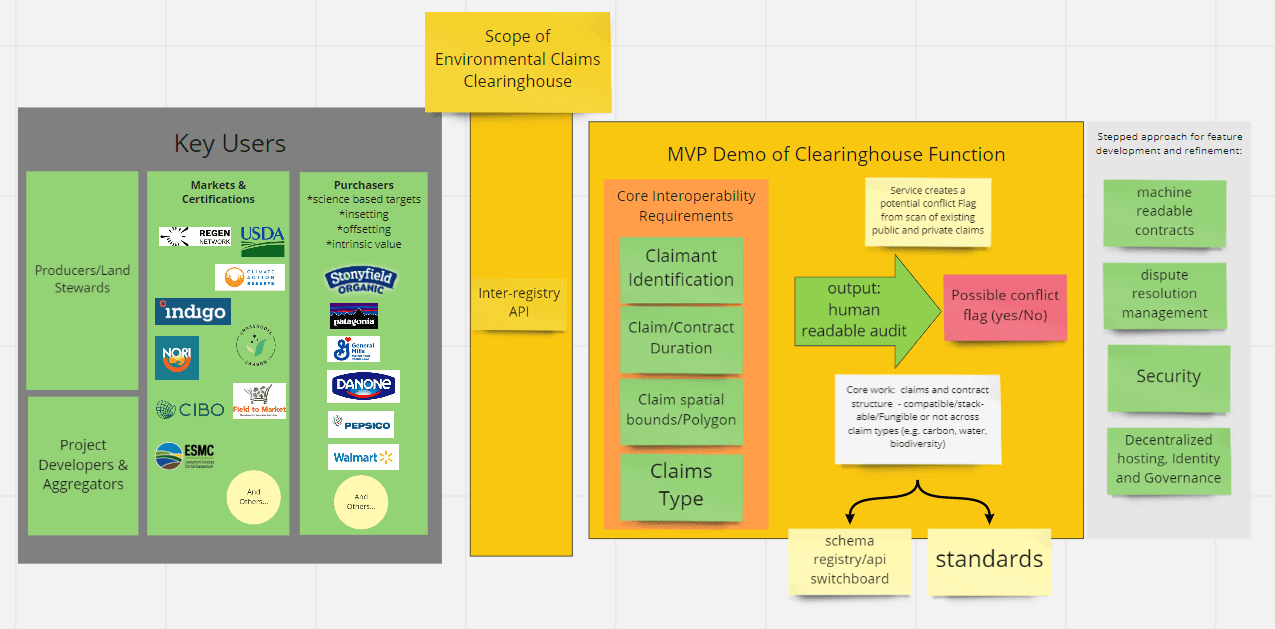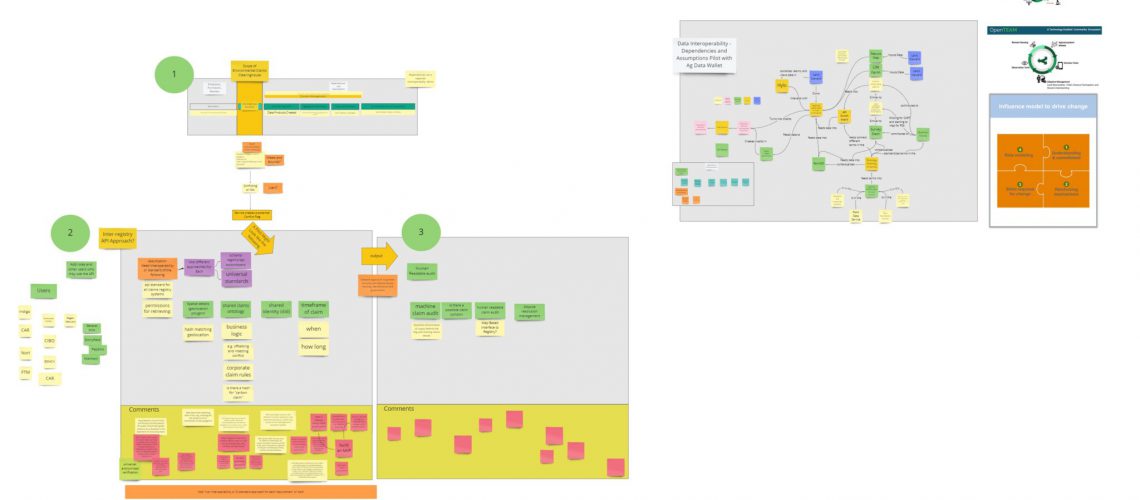The Environmental Claims Clearinghouse Collabathon, which completed in October, constituted a precompetitive effort of more than thirteen organizations, representing diverse market perspectives. They came together to address the global urgency of creating credible environmental service marketplaces that support paying the people working most closely with the land, often farmers or ranchers, for actions which produce specific environmental benefits. These “Environmental Claims”, whether the sequestration of carbon, increases in biodiversity, improvement in water quality, reduction in flooding risk, or any other science-based claim, will require a functioning multi-faceted system that will enable stacking of benefits without double counting. This will benefit land stewards, purchasers, project developers and markets.
What is an Environmental Claim?
In this case, environmental claims refer to the ecosystem services someone, such as a land steward, is providing to others. This identifies benefits the individual’s work or business has on the ecosystem such as creating cleaner water by avoiding pesticide use and developing buffers. These claims operate similarly to carbon credits, where someone can buy and sell their claims to gain economic benefits from the positive effects they have on the environment.

The ‘markets’ for these claims provide opportunities for diverse participants to come together to buy and sell, but they are in an early stage. Governments, big corporations, start-ups, and nonprofits are all experimenting with different ways to verify and exchange these planetary benefits. It is too early to pick a winner, and attempting to do so would be counterproductive, inhibiting the innovation currently evident.
— Collabathon Statement of Need
With multiple competing markets, though, comes a particular problem: how can a buyer know that the claim which they’re purchasing in Market A hasn’t already been sold to someone else in Market D and Market F? This concern for claim authenticity and exclusivity creates the need for a “clearinghouse” between markets.


What is a Clearinghouse?
A clearinghouse is where all markets, in this case ecosystem services markets, meet to verify individual environmental claims that are being made, ensuring validity and minimizing double-counting of said claim.
Both the buyers and the marketplaces themselves benefit from a system which allows comprehensive and rapid comparison of claims between all participating markets. The clearinghouse can rapidly identify potentially conflicting claims, allowing deeper diligence if necessary. The enhanced trust and transparency achieved through a clearinghouse results in a reduced risk of getting involved for land stewards such as farmers.
accelerating adoption and hence accelerating global benefits.
— Collabathon Statement of Need
As long as purchasers and the general public are skeptical of environmental claims, markets will remain underdeveloped and inefficient. As trust grows, markets operate more efficiently, with lower costs to market participants and more left over for the people on the ground, doing the work.
The Collabathon participants imagine a clearinghouse operated on a voluntary and non-profit basis to benefit all. Agreement on simple data formats and interchange will allow rapid flagging and resolution of potential conflicts, while maintaining the flexibility to support new and evolving types of claims. The basic data required is a simple who (claim maker), what (claim type), when (dates and duration of claim), and where (what land is subject of the claim). This would allow member marketplaces to check all new claims before issuance, and provide the ability for any buyer to rapidly affirm the exclusivity of their claim.
As the Collabathon completes its work, the next step is to bring together two or three existing ecosystem services markets and build a prototype clearinghouse system.



No comment yet, add your voice below!